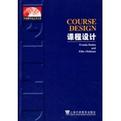课程设计
2002-1
上海外语教育出版社
杜宾等著,,,英国
194
《外语教学法丛书(4):课程设计》共十二章,涉及教与学的关系、教学安排、课堂活动、语言技能等等方面,绝大部分章节都是先介绍该章内容,然后列出各种具体教学活动(tasks),其后是对各项活动的分析评述。例如第六章“说的技能”共有四小节,即1)为什么要说;2)交际性活动;3)语言交际与流利;4)演戏和角色扮演,每节都提供各种相应的具体活动和作者对各项活动的评述。教师可以根据自己的实际情况选择其中某些活动进行课堂教学。
ThanksIntroduction1 The fact-finding stage: assessing societal factorsOverview1.1 The language setting1.1.1 The continuum: ESL- EFL1.2 Patterns oflanguage use in society1.2.1 Education1.2.2 The labor market1.2.3 The process of modernization1.3 Group and individual attitudes toward language1.4 The political and national contextPractical applicationsReferences2 The basis for curriculum and syllabus designingOverview2.1 Establishing realistic goals2.1.1 In an EFL setting2.1.2 In an ESL setting2.1.3 Planning for courses outside the school system2.1.4 Language analysis or language use as course goals2.2 Surveying existing programs2.2.1 The existing syllabus2.2.2 The materials in use2.2.3 Theteachers2.2.4 Thelearners2.2.5 Theresources2.3 When the materials in use constitute the curriculum and syllabus2.4 The separate purposes of a curriculum and a syllabus2.4.1 The components of a curriculum2.4.2 Types of syllabusesPractical applicationsReferences3 How goals become realized through instructional plansOverview3.1 Translating general goals into syllabus objectives3.1.1 A curriculum provides a statement of policy3.1.2 The link between goals and objectives3.1.3 Syllabuses without a curriculum3.2 Language content, process, and product in syllabus designs3.2.1 The language content dimension3.2.2 The process dimension3.2.3 The product dimension3.3 Selecting the shape of the syllabus3.3.1 The linear format 3.3.2 The modular format3.3.3 The cyclical format3.3.4 The matrix format3.3.5 The story-line format3.4 The place of methodPractical applicationsReferences4 A curriculum developed on communicative goals Overview4.1 Sociocultural views of the nature of language4.2 A cognitively-based view oflanguage learning4.2.1 Strategies and tactics4.2.2 Context-embedded and context-reducedlanguage use4.2.3 The holistic approach to language learning4.2.4 What learners' errors tell us4.3 The fundamentals of a humanistic curriculum4.4 Exploring the roles of teachers, learners and others within a communicative curriculum4.4.1 Teaching/learning as a metaphor4.4.2 Is teaching/learning adequate>4.4.3 Cross-culruralimplications4.4.4 Developing alternative metaphorsPractical applicationsReferences5 The scope of a communicative syllabusOverview5.1 Expansion of the language content dimension5.1.1 Conceptual and functional meaning5.1.2 Socioculturalappropriateness5.1.3 Longer spans of discourse……6 Focuslng onlanguage contentin a communicative syllabus7 Focuslng on process: materials that dealwith sociocultural appropriareness8 Focusina on product: materials that deal with the reading skill9 Creating materials: the link between syllabus and audienceEpilogueCumulative bibliographyAcknowledgementsIndex
process of furthering one's education is whether English is the medium of instruction in the school system. The question to ask is: do students study geography, math, and other general subjects in the native language or in English? Not all cases where English is the medium of instruction are the same.In some countries the medium of instruction is the native language onlyin the early years of schooling, while English becomes the medium insecondary school and in others English is the medium of instruction only at the college level.ln other cases, English as a medium of instruction is limited to certain subjects for which there may not exist suitable teaching materials. In Malaysia, for instance (Boey 1979), at the time when the country gained its nationalindependence in 1957, the primary school offered six-year courses in four languages: Malay, English, Chinese and Tamil; but it was written into the constitution that Malay would become the national language and English would be the official second language.Thus the educational system began a transition period switching gradually from English to Malay as the medium of instruction, reaching a stage at which only tertiary education still maintained English as a medium by 1982. At this point, many educationists realized that the level of English proficiency, as was to be expected, decreased and therefore some suggested that English be reinstated as a medium of instructionat least for some of the subjects. In order to evaluate the true role of English in the school system,it is necessary to have a full picture of all subjects taught at schooland of all available textbooks and other teaching materials. In addition,if teachers are not native speakers it is important to evaluate their knowledge of and ability to use English. Another question arises in cases where English is not the medium of instruction: what is the role of English as a language of study? This question refers to the degree to which the learners depend on their knowledge of English in order to get access ro the subjea matter of their interest. For example, what level of English competence is actually necessary for a person to study engineering at the college level? Are there any textbooks, lectures and other study matter in the native language or is it all available in English only? English as a language through which to learn advanced subjects is sometimes referred to as EAP (English for Academic Purposes) but, in fact, the scope of learning a language for studying is wider than that of an academic context since it may also include scientific and technological subjects which are not taught at the college level. For example, courses in vocational or technical schools might make use of texts and manuals written in English. Once the role of the LWC in education is established, it is necessary to evaluate the effectiveness of the existing program and materials. Often a new program is required because there is a serious gap between the results of the existing one and the needs of learners for English as a language of study. Policy decisions will have to be made in order to find ways to close this gap, if indeed it has been determined that learning through the English language is a worthwhile educational goal in the society. ……
